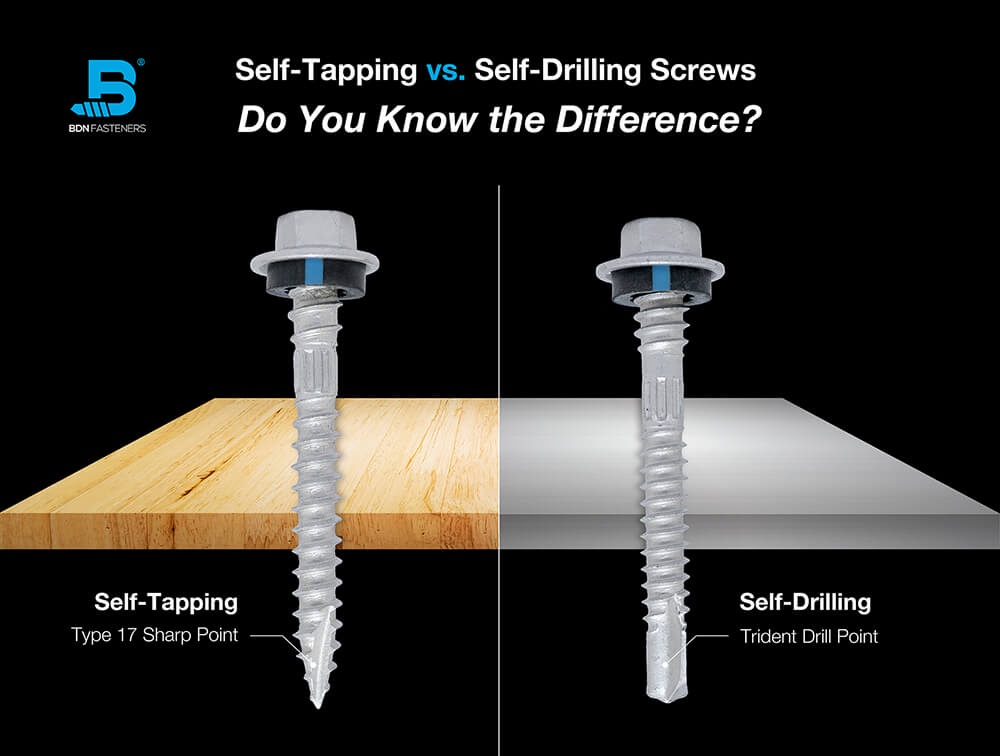Introduction: self tapping screw are ubiquitous in our daily lives, yet many of us don't fully grasp their significance and versatility. In this article, we will delve into the world of self-tapping screws, exploring what they are, how they work, and answering frequently asked questions to help you become a DIY expert in no time.
FAQ Section:
1. What Are Self-Tapping Screws?
Self-tapping screws are threaded fasteners designed to create their own threads as they are driven into a material. Unlike traditional screws, which require a pre-drilled hole, self-tapping screws eliminate the need for this extra step. They are engineered with a sharp, angled point that allows them to cut threads into the material, making installation faster and more straightforward.
2. How Do Self-Tapping Screws Work?
Self-tapping screws work by employing a cutting edge at the tip, which carves a path into the material as the screw is turned. Once the initial thread is established, the screw's remaining threads grip onto the newly created threads, providing a secure and durable connection. This innovative design makes them particularly useful for materials like wood, metal, and plastic.
3. What Are the Different Types of Self-Tapping Screws?
Self-tapping screws come in various shapes and sizes, each designed for specific applications. Some common types include:
- Phillips Head Self-Tapping Screws: These have a cross-shaped head, allowing for easy installation with a screwdriver or drill.
- Hex Head Self-Tapping Screws: These have a hexagonal head, providing more resistance to stripping and making them suitable for high-torque applications.
- Pan Head and Flat Head Self-Tapping Screws: These come with different head shapes, depending on the aesthetic and functional requirements of the project.
- Sheet Metal Self-Tapping Screws: These are specifically designed for fastening thin metal sheets.
4. Where Can You Use Self-Tapping Screws?
Self-tapping screws are incredibly versatile and can be used in a wide range of applications, including:
- Construction and carpentry projects.
- Automotive repairs.
- Furniture assembly.
- Electrical and plumbing work.
- Fastening metal roofing or siding.
5. What Are the Advantages of Using Self-Tapping Screws?
Self-tapping screws offer several advantages:
- Time-saving: Eliminates the need for pre-drilling holes, reducing installation time.
- Strong grip: Self-tapping screws create their own threads, ensuring a secure hold.
- Versatility: Suitable for various materials, including wood, metal, and plastic.
- Precision: Ideal for applications where accuracy and alignment are critical.
6. Can Self-Tapping Screws Be Reused?
In most cases, self-tapping screws can be removed and reused, but it's essential to exercise caution. Over time, the threads may wear, reducing their effectiveness. If the threads are damaged or worn, it's advisable to replace the screw with a new one for a secure connection.
7. What Are Some Common Mistakes to Avoid When Using Self-Tapping Screws?
When working with self-tapping screws, consider the following:
- Ensure the screw size and material match the application.
- Don't overtighten, as it can strip the threads or damage the material.
- Use the correct driver bit to avoid damaging the screw head.
In conclusion, self-tapping screws are a practical and time-saving solution for a wide range of DIY and professional projects. Their unique design simplifies the installation process and ensures a secure connection in various materials. By understanding the basics and following best practices, you can harness the power of self-tapping screws to tackle your projects with confidence.


No comments yet